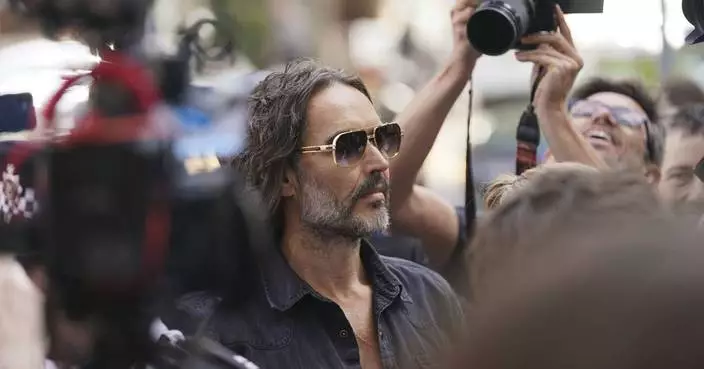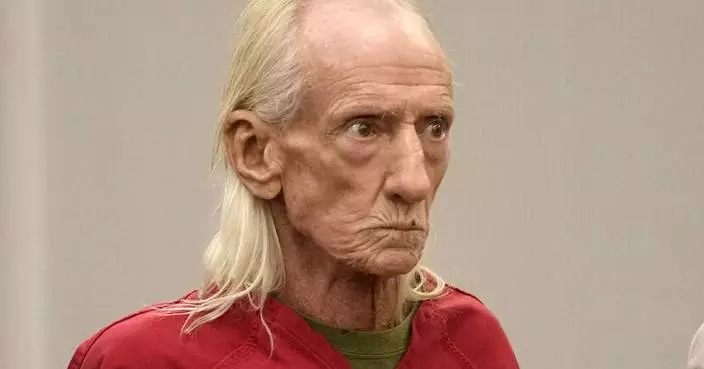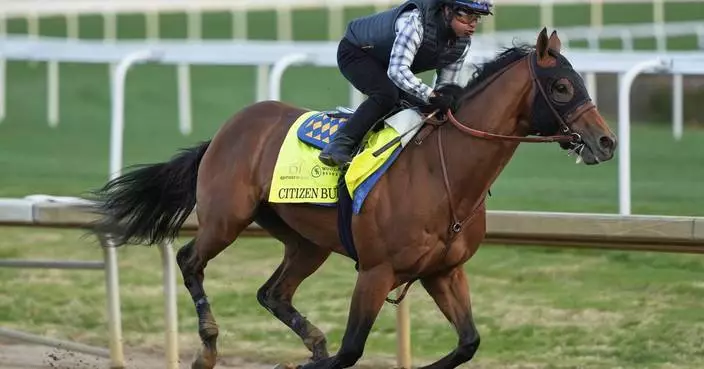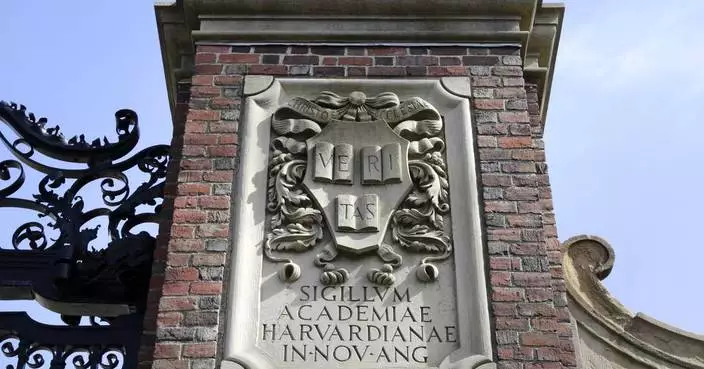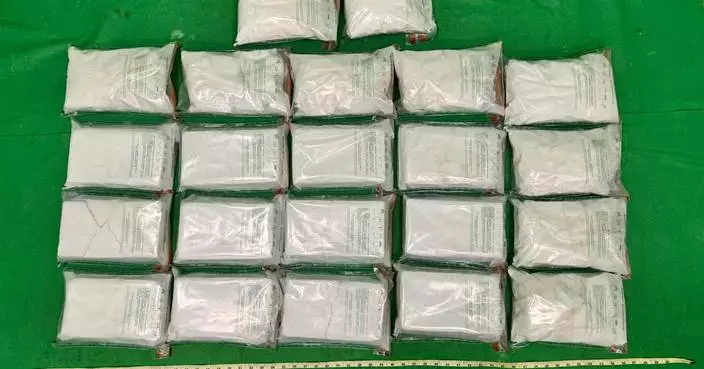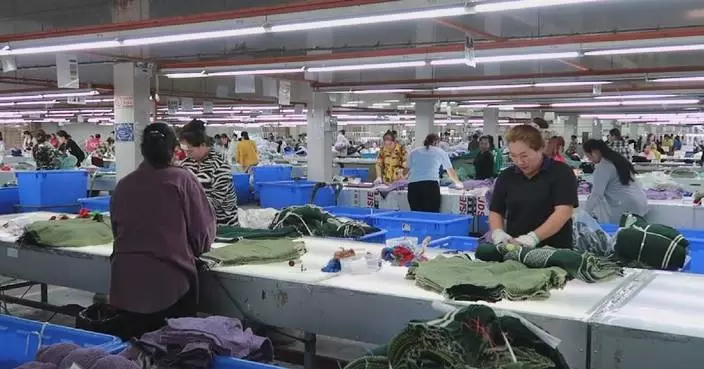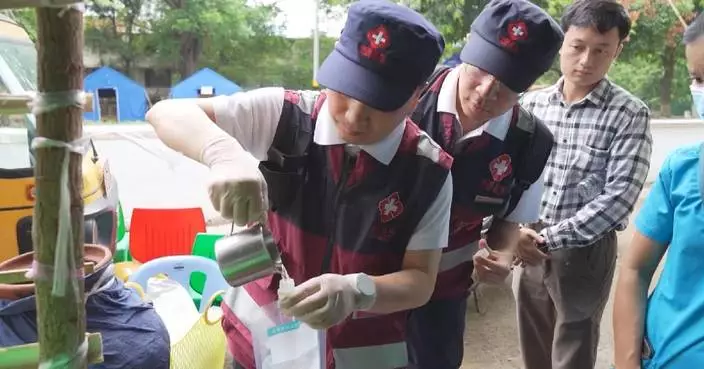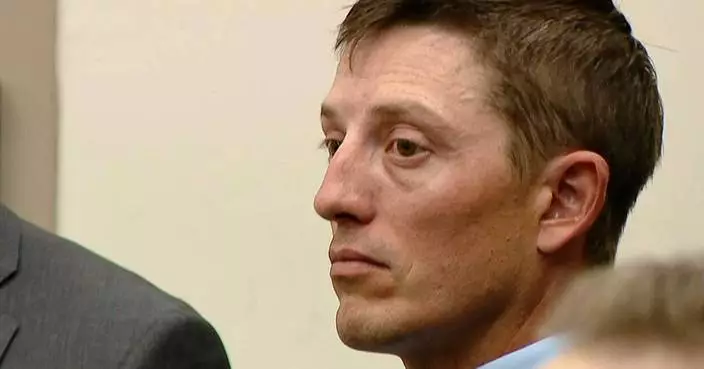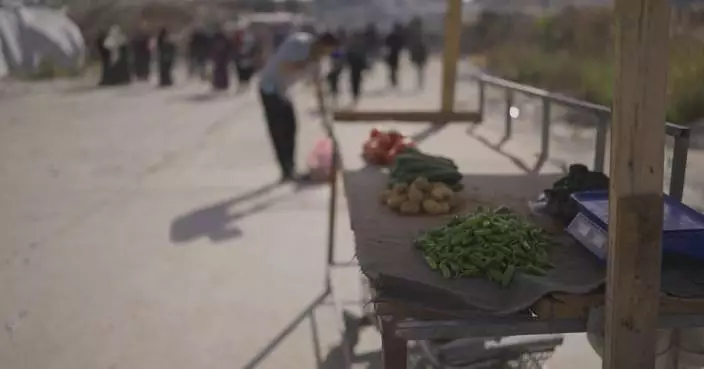TOKYO (AP) — The new U.S. ambassador to Japan arrived in Tokyo on Friday and said he is optimistic that his country and its key Asian ally will reach a deal in their ongoing tariff negotiations.
George Glass, a prominent businessperson known for his background in finance, investment banking and technology, arrives as Washington and Tokyo are negotiating President Donald Trump's tariff measures, which have triggered worldwide concern about their impact on the economy and global trade.
Click to Gallery
U.S. Ambassador to Japan George Glass, second left, and his wife Mary, left, are welcomed by Joseph Young, center, Acting Deputy Chief of Mission at the US Embassy in Tokyo, Eiichi Kawahara, second right, Ambassador Special Assistant to the Minister for Foreign Affairs, and Victor Osumi, right, President of Japan Operations of Delta, upon their arrival at Haneda Airport in Tokyo Friday, April 18, 2025. (Kazuhiro Nogi/Pool Photo via AP)
New U.S. Ambassador to Japan George Glass and his wife Mary attend a press conference after their arrival in Tokyo Friday, April 18, 2025. (Kazuhiro Nogi/Pool Photo via AP)
New U.S. Ambassador to Japan George Glass and his wife Mary pose for the media at a press conference after their arrival in Tokyo Friday, April 18, 2025. (Kazuhiro Nogi/Pool Photo via AP)
New U.S. Ambassador to Japan George Glass answers questions from journalists at a press conference after his arrival in Tokyo Friday, April 18, 2025. (Kazuhiro Nogi/Pool Photo via AP)
New U.S. Ambassador to Japan George Glass answers questions from journalists at a press conference after his arrival in Tokyo Friday, April 18, 2025. (Kazuhiro Nogi/Pool Photo via AP)
U.S. Ambassador to Japan George Glass, left, is escorted by Victor Osumi, right, president of Japan Operations of Delta, upon his arrival at Haneda Airport in Tokyo Friday, April 18, 2025. (Kazuhiro Nogi/Pool Photo via AP)
U.S. Ambassador to Japan George Glass, center, and his wife Mary are welcomed by Joseph Young, acting deputy chief of mission at the U.S. Embassy in Tokyo, upon their arrival at Haneda Airport in Tokyo Friday, April 18, 2025. (Kazuhiro Nogi/Pool Photo via AP)
U.S. Ambassador to Japan George Glass, second left, and his wife Mary, left, are welcomed by Joseph Young, center, Acting Deputy Chief of Mission at the US Embassy in Tokyo, Eiichi Kawahara, second right, Ambassador Special Assistant to the Minister for Foreign Affairs, and Victor Osumi, right, President of Japan Operations of Delta, upon their arrival at Haneda Airport in Tokyo Friday, April 18, 2025. (Kazuhiro Nogi/Pool Photo via AP)
“I'm extremely optimistic ... that a deal will be get done,” Glass told reporters after landing at Tokyo's Haneda international airport.
His arrival comes a day after the two countries held their first round of tariff talks between their top negotiators in Washington where both sides agreed to try to reach an agreement as quickly as possible and hold a second round of meetings later this month.
Trump, alongside his top economic advisers, Treasury Secretary Scott Bessent and Commerce Secretary Howard Lutnick, attended the meeting with the Japanese delegation headed by Economic Revitalization Minister Ryosei Akazawa at the White House.
With his reputation as a dealmaker being tested, Trump likely wants to finalize a series of trade deals as countries around the world seek to curb damages from the U.S. tariffs.
Trump's recent announcement of a 90-day pause temporarily spared Japan from 24% across-the-board tariffs, but a 10% baseline tariff and a 25% tax on imported cars, auto parts, steel and aluminum exports remains in place.
Japanese Prime Minister Shigeru Ishiba has said the tariffs would deal a blow to Japan's economy and chill Japanese companies' investment in the U.S. and that the two sides should seek a settlement that would benefit both.
Trump is also pushing Tokyo to further increase its defense spending and shoulder more burden for hosting some 50,000 American troops as the allies strengthen military cooperation. He brought up the issue during his tariff talks with Japan.
“We sit with Japan in a very tough neighborhood. You have Russia, you have China, and you have North Korea,” Glass said Friday, adding that the allies need to make sure their militaries have all the materials they need “to push back against a country like China.”
Glass, in his nomination testimony at the Senate Foreign Relations Committee in March, vowed to have “tough conversations” on tariffs and reducing U.S. trade deficit with Japan and to make sure Tokyo continues further increasing its defense role in the region.
Japan, a longstanding U.S. ally, is among the first countries that began negotiating tariffs with Washington. Other American allies are closely watching their talks.
Glass said he is confident that a deal can be reached because “the best and the brightest” officials from both Japan and the U.S. are negotiating and Trump is personally involved in the talks, calling them his top priority.
America’s $40 trillion national debt, he said, makes the country "unsustainable and that’s the end of our economy if we keep going down this road."
Glass, who starts work Monday, did not elaborate on how he could help Tokyo and Washington hammer out their differences. After a long flight, he said, “what I'd like to do first is to go home and take a nap."
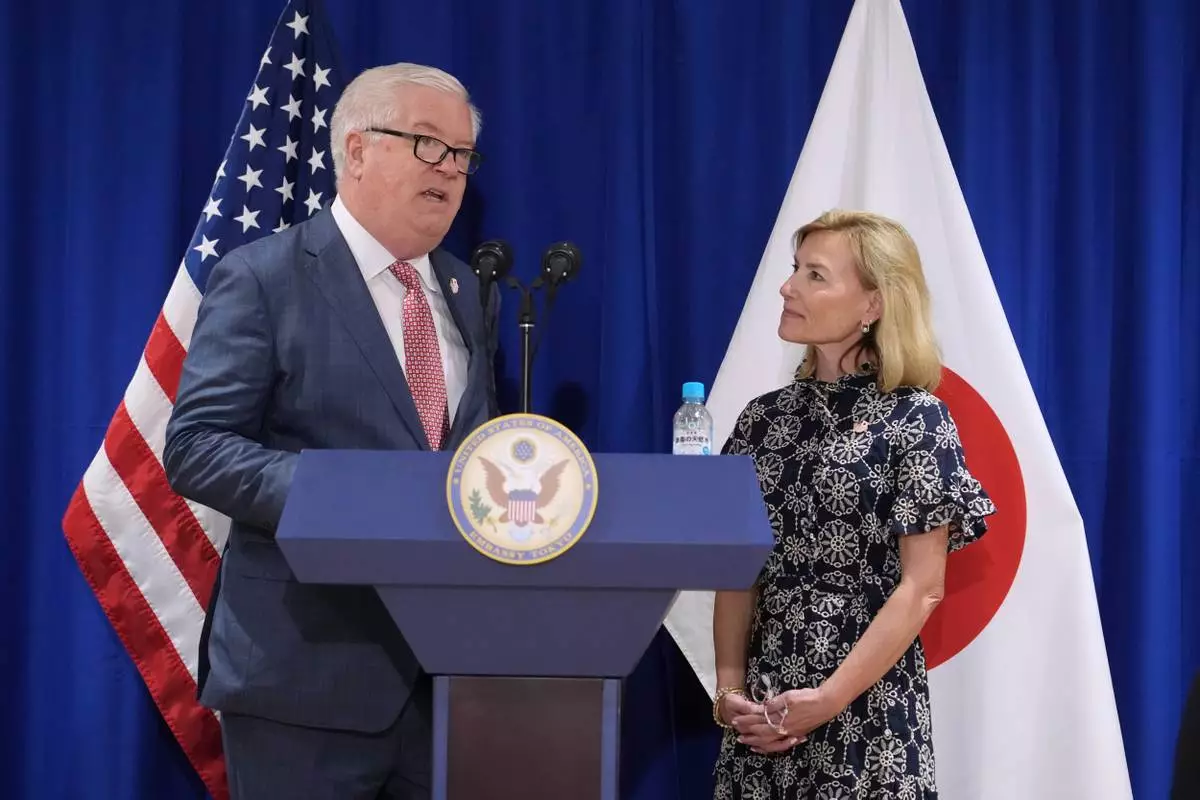
New U.S. Ambassador to Japan George Glass and his wife Mary attend a press conference after their arrival in Tokyo Friday, April 18, 2025. (Kazuhiro Nogi/Pool Photo via AP)
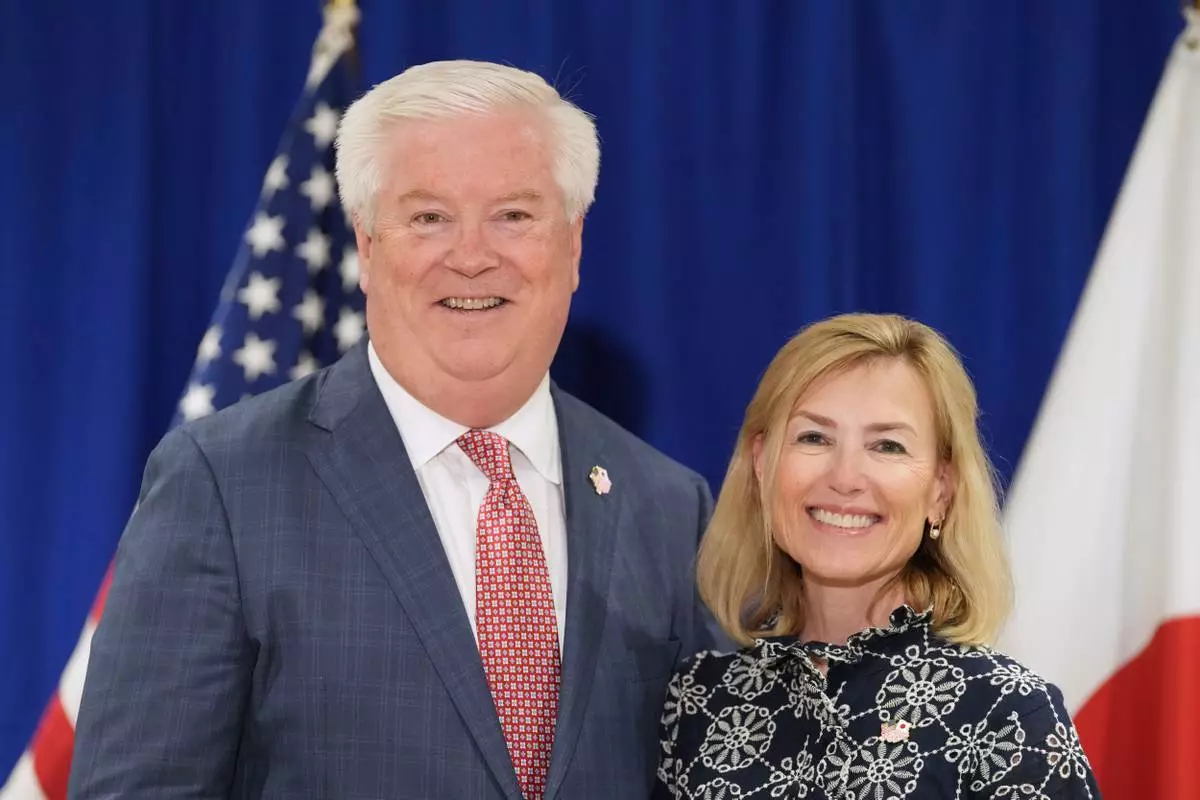
New U.S. Ambassador to Japan George Glass and his wife Mary pose for the media at a press conference after their arrival in Tokyo Friday, April 18, 2025. (Kazuhiro Nogi/Pool Photo via AP)
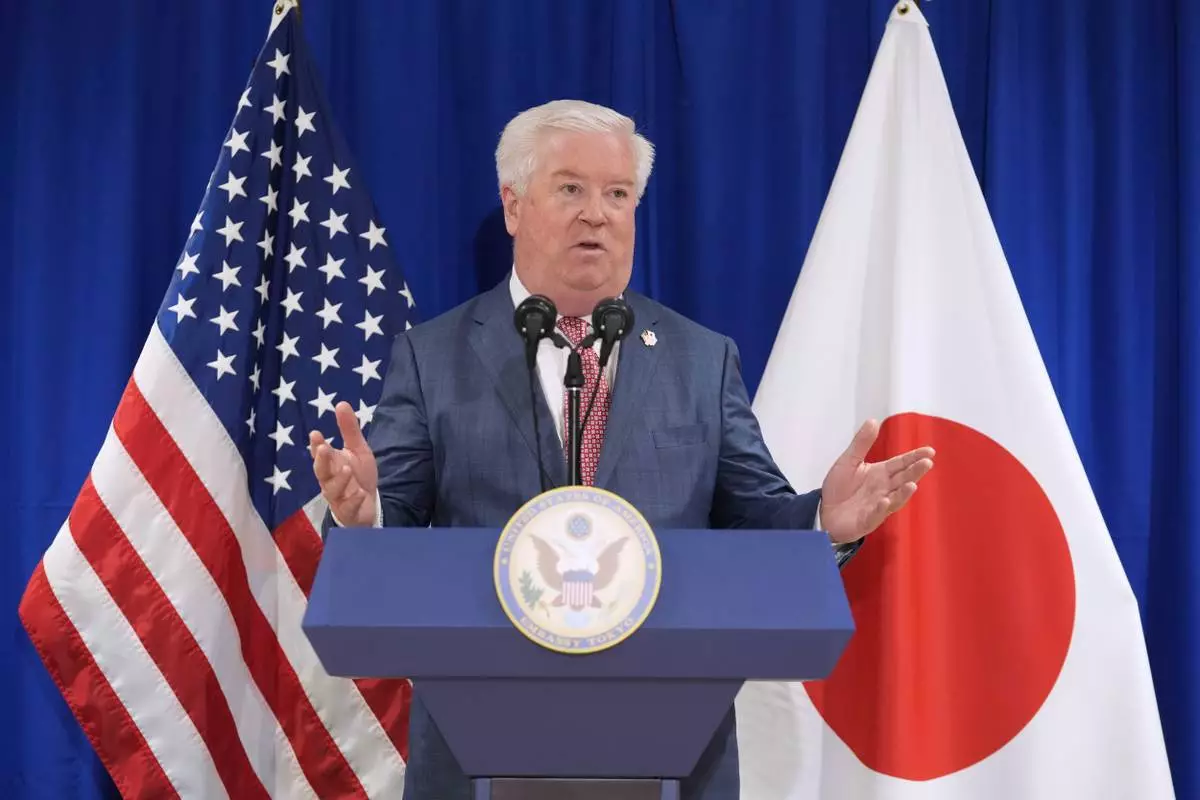
New U.S. Ambassador to Japan George Glass answers questions from journalists at a press conference after his arrival in Tokyo Friday, April 18, 2025. (Kazuhiro Nogi/Pool Photo via AP)
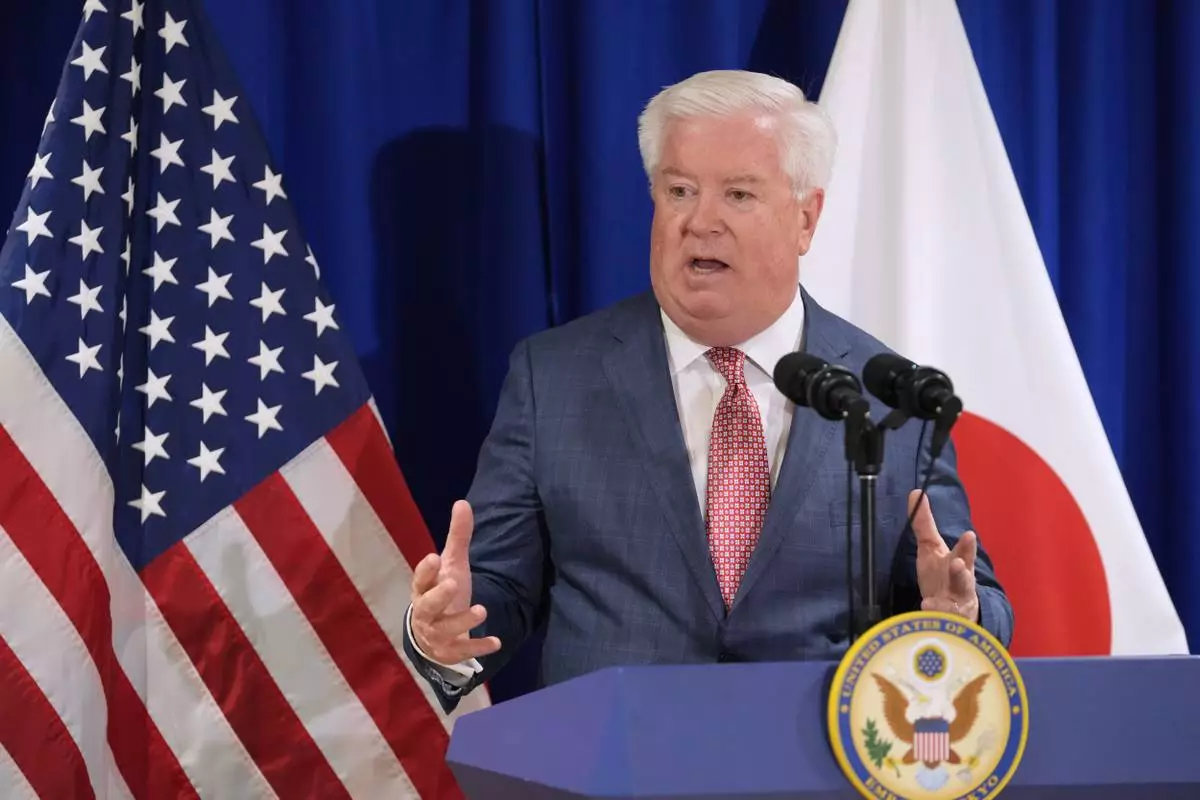
New U.S. Ambassador to Japan George Glass answers questions from journalists at a press conference after his arrival in Tokyo Friday, April 18, 2025. (Kazuhiro Nogi/Pool Photo via AP)
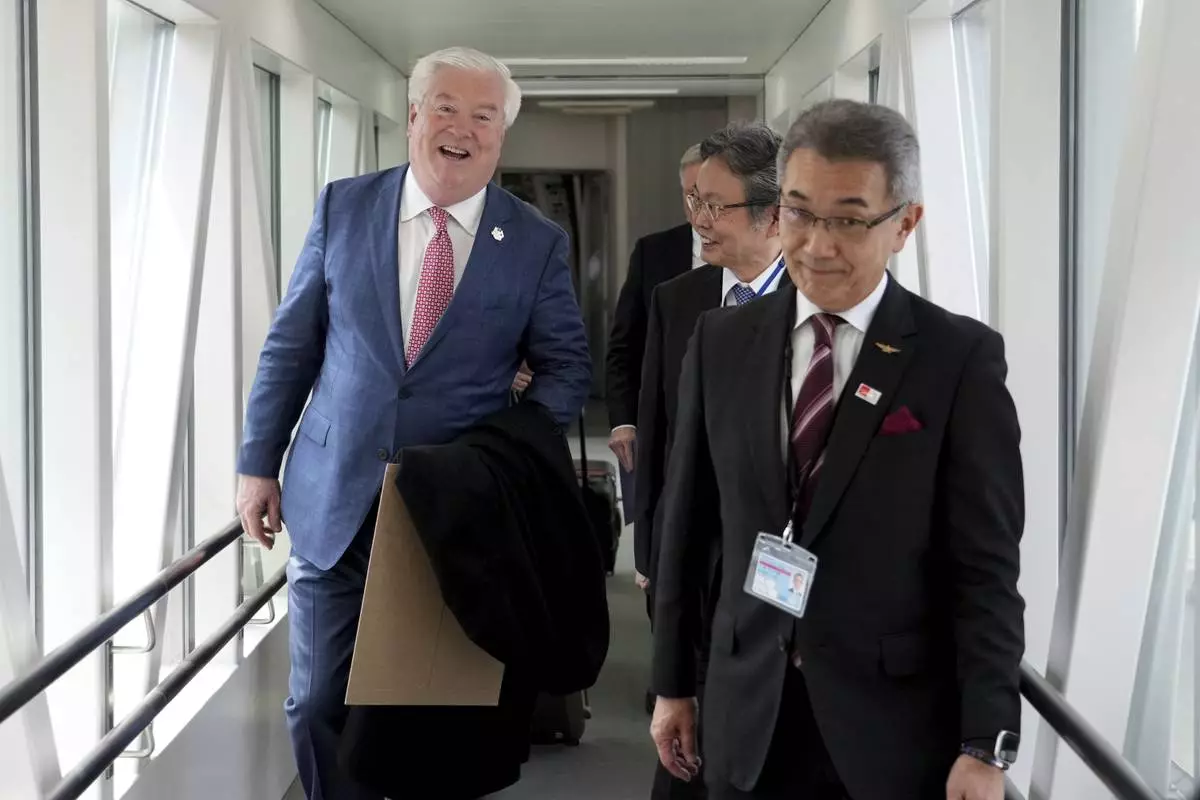
U.S. Ambassador to Japan George Glass, left, is escorted by Victor Osumi, right, president of Japan Operations of Delta, upon his arrival at Haneda Airport in Tokyo Friday, April 18, 2025. (Kazuhiro Nogi/Pool Photo via AP)
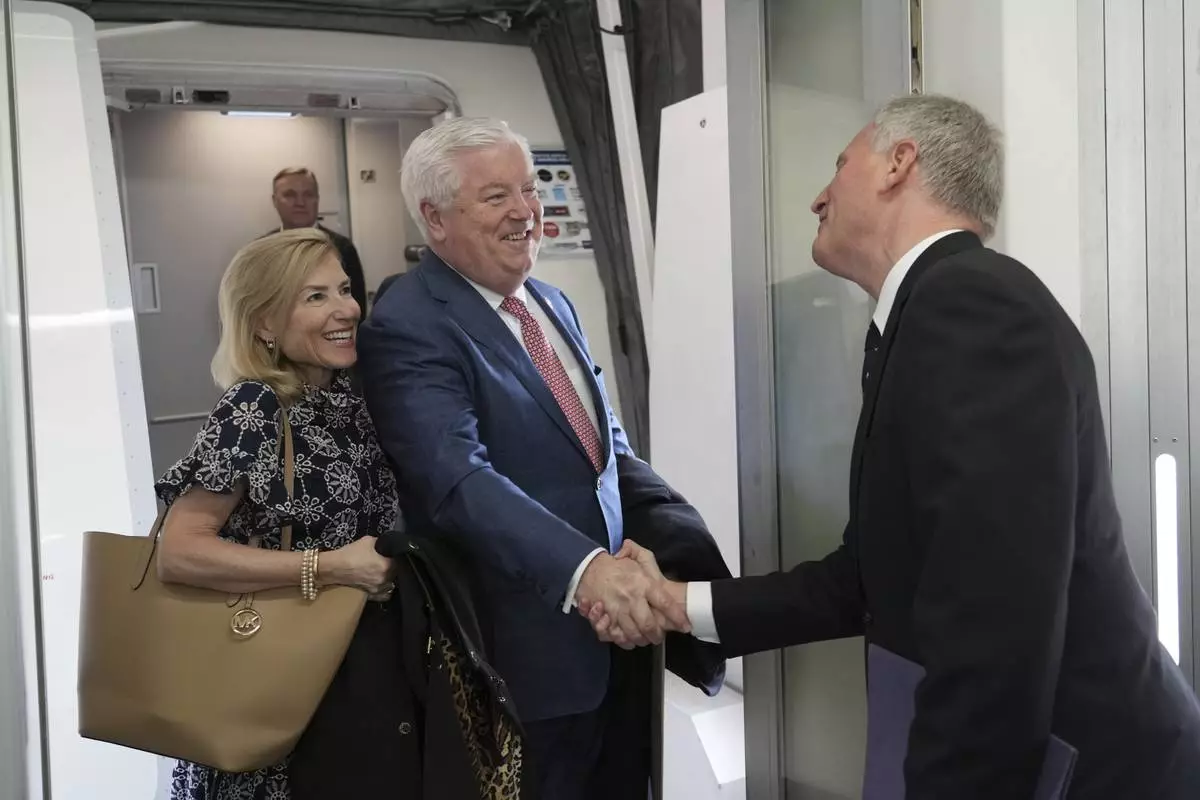
U.S. Ambassador to Japan George Glass, center, and his wife Mary are welcomed by Joseph Young, acting deputy chief of mission at the U.S. Embassy in Tokyo, upon their arrival at Haneda Airport in Tokyo Friday, April 18, 2025. (Kazuhiro Nogi/Pool Photo via AP)
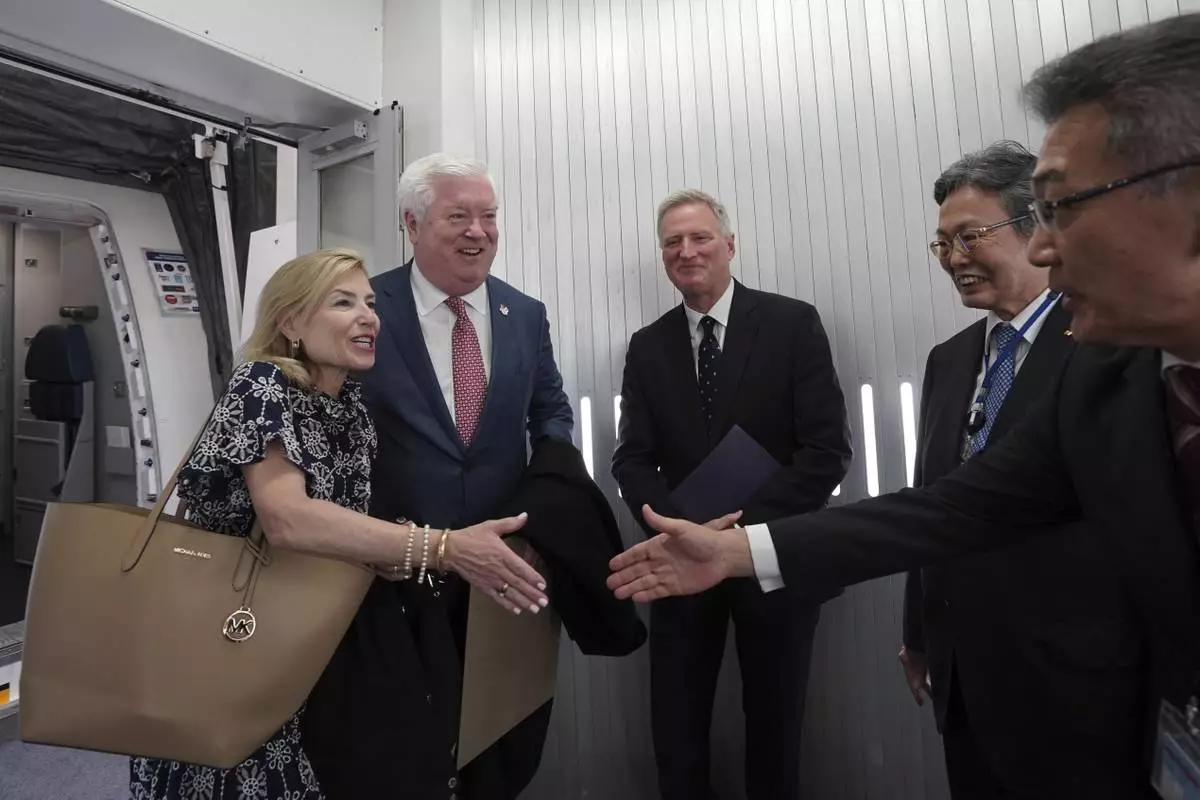
U.S. Ambassador to Japan George Glass, second left, and his wife Mary, left, are welcomed by Joseph Young, center, Acting Deputy Chief of Mission at the US Embassy in Tokyo, Eiichi Kawahara, second right, Ambassador Special Assistant to the Minister for Foreign Affairs, and Victor Osumi, right, President of Japan Operations of Delta, upon their arrival at Haneda Airport in Tokyo Friday, April 18, 2025. (Kazuhiro Nogi/Pool Photo via AP)
BEIRUT (AP) — Four days of clashes between pro-government gunmen and members of a minority sect in Syria have left nearly 100 people dead and raised fears of deadly sectarian violence. The country is deeply divided as it tries to emerge from decades of dictatorship.
The clashes are the worst between forces loyal to the government and Druze fighters since the fall of President Bashar Assad in early December whose family ruled Syria with an iron grip for more than five decades.
The situation between the two sides has been tense for weeks and a smaller clash broke out in March in a suburb of Damascus.
Here are the main reasons the clashes expanded in recent days and background on the two sides:
The Druze religious sec t is a minority group that began as a 10th-century offshoot of Ismailism, a branch of Shiite Islam. More than half the roughly 1 million Druze worldwide live in Syria. Most of the other Druze live in Lebanon and Israel, including in the Golan Heights, which Israel captured from Syria in the 1967 Mideast War and annexed in 1981. In Syria, they largely live in the southern Sweida province and some suburbs of Damascus, mainly in Jaramana and Ashrafiyat Sahnaya to the south.
The transitional government has promised to include the Druze, but has so far kept authority in the hands of the Islamist former insurgents who toppled Assad in December — Hayat Tahrir al-Sham, or HTS.
The new 23-member government in Syria announced in late March only has one Druze member, Minister of Agriculture Amjad Badr.
Under the Assad family's tight rule, religious freedom was guaranteed as the country then boasted about its secular and Arab nationalist system.
The Druze have been slightly divided over how to deal with their issues with the new status quo in the country. Most Druze support a dialogue with the government while others support a more confrontational approach, so the reactions have differed while they are all concerned about the safety of their people.
Syria’s religious and ethnic communities are worried about their place in Syria’s new system that is mostly run by Islamists including some who have links to extremist groups.
The country’s new President Ahmad al-Sharaa himself is a former militant who once was a member of al-Qaida and was held for years in jails in neighboring Iraq for his role in the anti-American insurgency. Although al-Sharaa had said that the right of ethnic and religious minorities will be protected, there have been several rounds of sectarian killings since Assad’s fall.
The Assad family rule that was dominated by members of the Alawite sect had oppressed much of the country’s Sunni majority while giving minorities some powers. Being a member of the Muslim Brotherhood, the largest Islamic group in the country decades ago, was punishable by death as of the 1980s.
The Druze have major concerns about Muslim groups since they came under attack by members of the Islamic State group in 2018 in the southern Sweida province. It left dozens killed or wounded and more than two dozen people were taken hostage for nearly four months. Muslim extremists consider the Druze heretics.
During Syria's 14-year conflict, the Druze had their own militias.
The clashes broke out around midnight Monday in the southern Damascus suburb of Jaramana after an audio clip circulated on social media of a man criticizing Islam’s Prophet Muhammad. The audio was attributed to a Druze cleric. But cleric Marwan Kiwan said in a video posted on social media that he was not responsible for the audio, which angered many Sunni Muslims.
The fighting later spread to the outskirts of the southern town of Sakhnaya triggering the first Israeli airstrike against pro-government gunmen. Israeli officials, whose country has its own Druze community, have vowed to protect the Druze of Syria and warned Islamic groups form entering predominantly Druze areas.
The clashes have pulled Israel further into the conflict with the airstrike two days ago and Friday marked a major increase in tensions with an attack close to the presidential palace in Damascus in what Syria’s presidency called a major escalation.
Israel does not want what it calls Islamic extremists near the country’s northern border. Since Assad’s fall, Israel has carved a buffer zone in southern Syria and has destroyed much of the Syrian army’s assets so they don’t fall into the hands of groups that removed him from power.
Israel had been warning for decades that Iran and its proxies pose a danger along its northern border, and now it is doing the same with the new authorities in Syria who are backed by Turkey.
Other sporadic attacks in different areas as well as an ambush on the Damascus-Sweida highway made the situation worse until a deal was reached early Friday after which Interior Ministry forces and local Druze gunmen deployed in different areas.
The Britain-based war monitor The Syrian Observatory for Human Rights said that 99 people were killed over the past four days, of which 51 were killed in Sakhnaya and the Druze-majority Damascus suburb of Jaramana. Among them were local gunmen and security forces.
The clashes near Damascus and in southern Syria came nearly two months after an ambush by fighters loyal to Assad triggered days of sectarian and revenge attacks. The fighting in the country’s coastal region left more than 1,000 people dead. Many of the dead were civilians who were gunned down because they belonged to the minority Alawite sect that Assad belongs to.
Security forces deployed in the coastal province of Latakia and Tartus but activists say that sectarian killings against Alawites are still taking place albeit at a much slower pace when compared to the early March attacks.
Members of religious minorities in Syria such as Alawites, Christians and Druze fear persecution by the main Sunni Muslim groups. Videos have circulated on social media showing Islamist fighters insulting Druze detainees and humiliating them such as shaving their mustaches.
Associated Press writer Ibrahim Hazboun contributed to this report from Jerusalem.
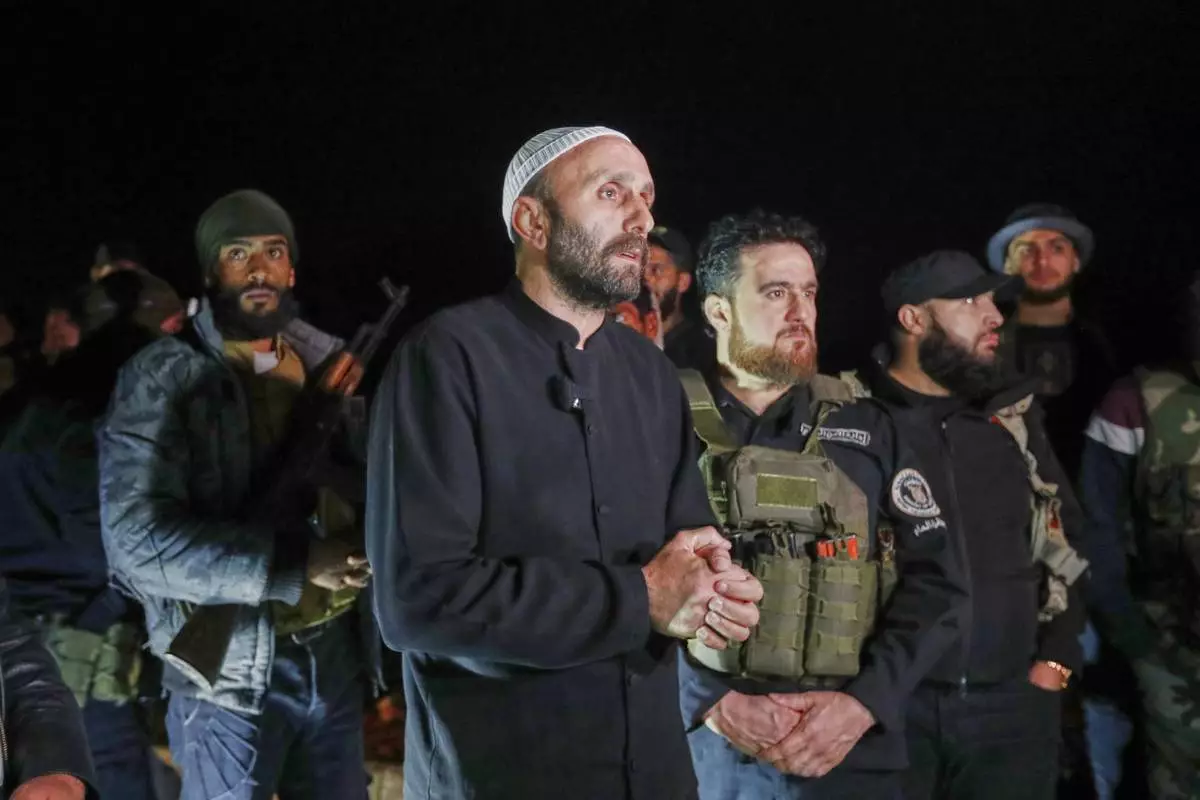
A Druze man, center, stands next to Syrian security forces who reached a deal with Druze gunmen to deploy around the southern Damascus suburb of Jaramana that has witnessed fighting earlier this week in Damascus, Syria, early Friday, May 2, 2025. (AP Photo/Omar Sanadiki)


















